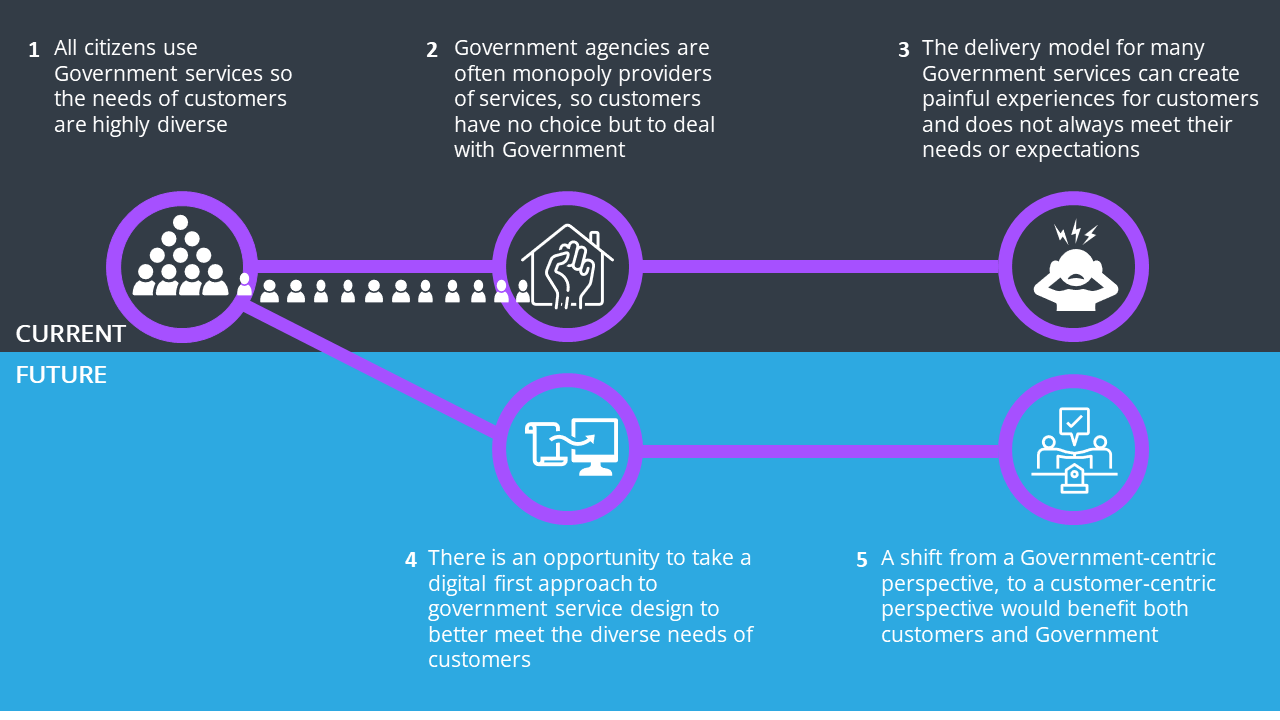Author: Steve Nuttall | Posted On: 13 Sep 2023
The delivery model for many local, state and federal Government services can create painful experiences for customers and does not always meet their needs or expectations. A digital first approach to government service design is a way of designing and delivering services that:
- puts the needs of the customer first
- uses digital technologies to make services more efficient and effective.
- is agile and adaptable to change
what are the drivers for digitisation?
There are many reasons why government agencies are taking a digital first approach to service design. These include:
- efficiency and cost savings: digitisation allows government agencies to streamline processes, reduce paperwork, and automate repetitive tasks. This can lead to significant savings in time and resources, making it a cost-effective approach for service delivery.
- enhanced customer experience: optimising digital interactions can save customers time, reduce frustration and be more personalised leading to higher levels of customer satisfaction
- improved accessibility: customers can access essential services and information at any time, from anywhere, and on any device when they are available online. This convenience can foster greater engagement and participation.
- service improvement: digital services enable the collection of data which can be analysed to derive insights, identify trends, and make informed decisions, thereby leading to better policy formulation and service improvements.
- transparency and accountability: digitisation facilitates easier tracking and auditing of processes and transactions. By making data and processes visible, government agencies can enhance public trust by demonstrating transparency and accountability in their operations.
- meeting public expectations: public expectations for digital-first, user-friendly, and seamless services have grown. Digitising services helps meet these modern expectations, aligning Government experiences with those provided by the private sector.
what are the challenges of implementing a digital first approach?
Fifth Quadrant has identified some common challenges to implementing a digital first approach to government service design. These challenges include:
- The need for a culture change within government agencies
- The need for investment in digital technologies
- The need to overcome technical challenges
- The need to ensure that all citizens have access to digital services
what steps are involved in taking a digital first approach?
The following are the steps involved in taking a digital first approach to government service design:
- understand the problem: what are the needs and expectations of the citizens? What are the challenges facing the government agency?
- gather data: this can include customer journey mapping, surveys, ethnography and co-creation workshops.
- develop a prototype. This is a rough version of the service that can be tested with users.
- get feedback. Test the prototype with users and get their feedback.
- iterate. Make changes to the prototype based on the feedback.
- launch the service
- gather feedback: collect and analyze user feedback for continual improvement.
in a nutshell

where to next?
Fifth Quadrant uses design thinking methods and tools to understand and diagnose current state customer experience to create new and relevant future state customer experiences which drive differentiation, loyalty, and advocacy. Contact our team for details on how we can help you create tomorrow’s customer experience today.

Posted in Social & Government, CJM, CX, QL

